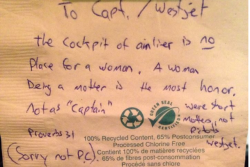Tanzanian rat handler Kassim Mgaza plays with a Gambian giant pouch rat in southern Mozambique.
You may remember the ferocious R.O.U.S. (Rodents of Unusual Size) in the fire swamps of The Princess Bride. This time, they’re real — and invading the Florida Keys.
A species of invasive African rat larger than the average house cat has made a reappearance in Grassy Key, despite efforts to wipe them out for the past 10 years. According to KeysNet, the population of Gambian pouched rat breed of giant rodents proliferated at the turn of the century when a local exotic animal breeder allowed eight to escape.
(LIST: Top 10 Evil Animals)
As of 2009, the Florida Fish and Wildlife Conservation Commission thought the region was in the clear. But alas, the 3-foot-long beasts, weighing as much as 9 pounds, came back with a vengeance. According to the U.S. Department of Agriculture, at least a few dozen are running wild. “In the early part of 2011, a resident emailed me and said he saw one of the rats. We were skeptical but went back and talked to people and [saw] there were rats that we missed,” Scott Hardin, FWC’s exotic-species coordinator, told KeysNet.
Not only they do they cause a stir when they show up in residents’ backyards, but the Gambian rat can also have negative impacts on local animal species and crops, and could disrupt fragile ecosystems if they reach mainland Florida, Reuters notes. In Zimbabwe, they’re often blamed for devouring nuts and damaging pea crops. They’re also linked to a 2003 outbreak of Monkeypox, a less serious version of human smallpox, in the Midwest.
(MORE: Rats Show Empathy, Free Trapped Companions)
They’ve even shown up in Brooklyn, N.Y., only to be harpooned with a pitchfork, and are also allegedly responsible for killing and eating two babies in South Africa last year, the Huffington Post reports.
Luckily, the Gambian rat can only produce one litter of up to six every nine months, and can’t reproduce until it’s five months old. To trap the remaining rodents, city officials plan to disperse 200 traps of cantaloupe, peanut butter, almond extract and anise laced with a deadly zinc phosphide.
“They don’t belong here and they need to be controlled,” Gary Witmer, a biologist with the U.S. Department of Agriculture’s National Wildlife Research Center in Fort Collins, Colorado, told Reuters. Adding, “They could cause a lot of damage.” Where’s the Dread Pirate Roberts when you need him?






